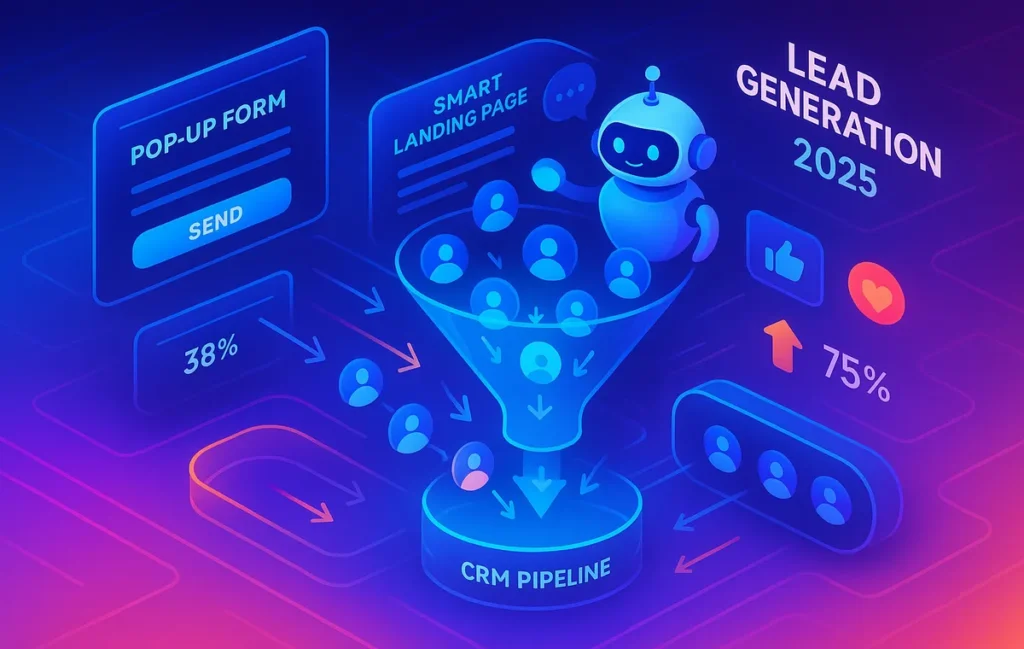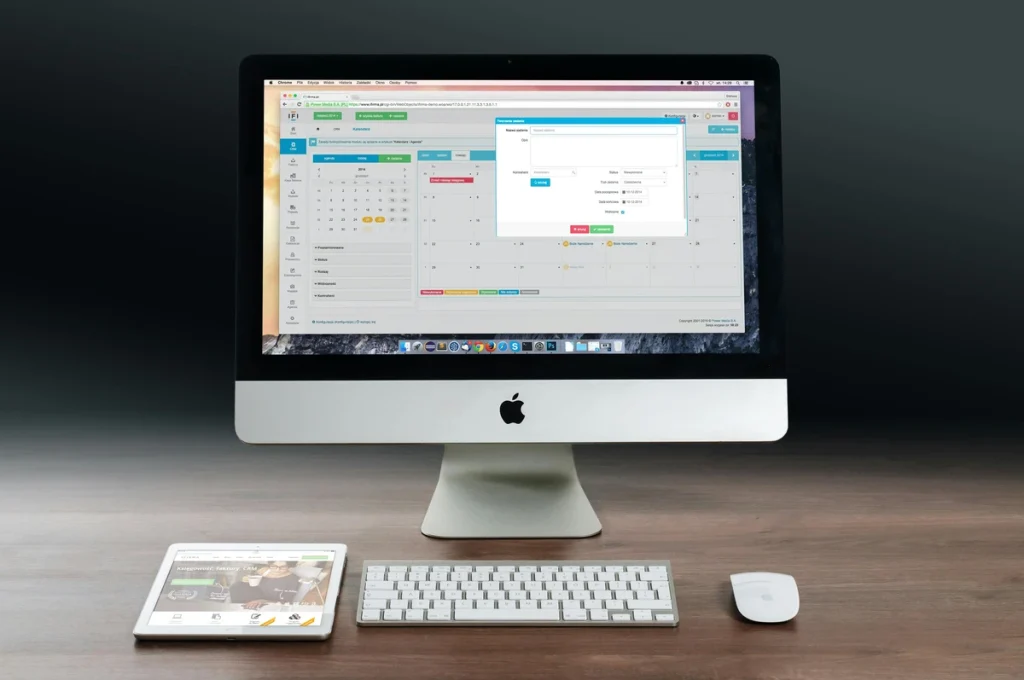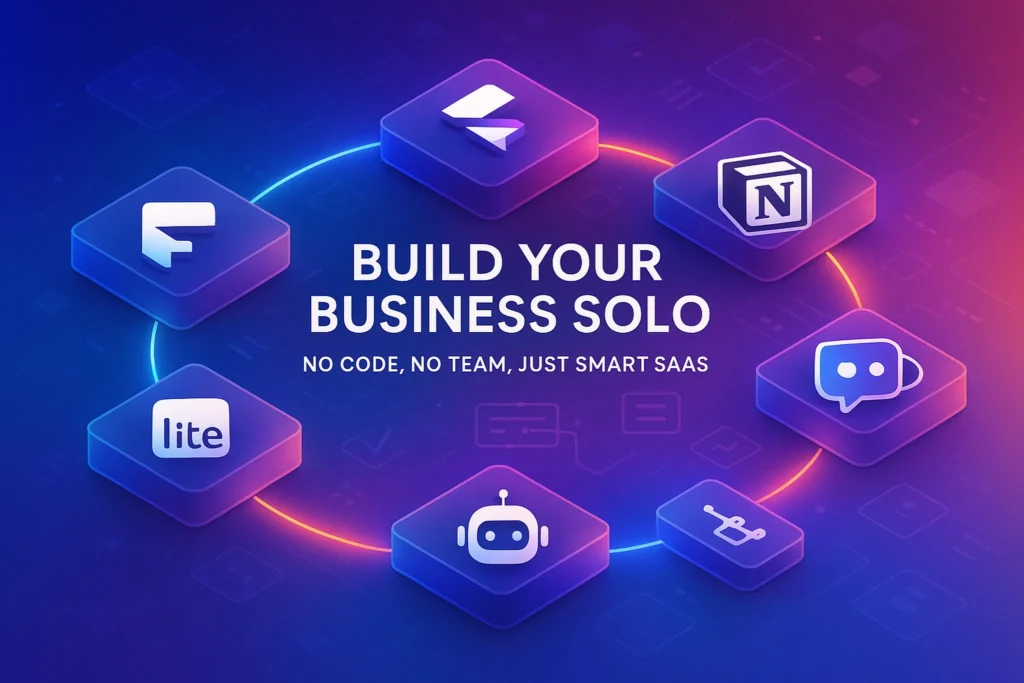🚀 Why Lead Generation Software Still Matters in 2025
In the noisy digital marketplace of 2025, the ability to capture qualified leads is the lifeline of every growth strategy. While CRMs and email marketing platforms help nurture relationships, the first contact point—the actual capture of a lead—is often overlooked. That’s where dedicated lead generation software shines. These tools are not just fancy opt-in forms; they’re conversion engines powered by A/B testing, AI-driven targeting, personalization, and seamless integrations with the rest of your stack.
💡 Nerd Tip: Think of your CRM as the library where you organize books (contacts). Lead generation software is the librarian who convinces people to bring their books into the library in the first place.
🏆 What Defines “Lead Generation Software” in 2025
It’s important to draw a line between capture tools and management tools. A CRM manages interactions after someone is already inside your pipeline, while email marketing platforms nurture relationships with campaigns. Lead generation software sits right before these—it convinces a stranger to take the first step, whether through pop-ups, landing pages, quizzes, or AI-powered widgets.
Unlike broader platforms, lead capture tools are laser-focused on conversion optimization. In practice, this means advanced targeting (exit intent, scroll depth, behavioral segmentation), hyper-personalized messaging, and integration-ready modules that instantly push contacts into your CRM or email platform. If you’ve read our piece on CRM vs. Marketing Automation, you already know the difference—and why skipping the capture stage weakens your funnel.
⭐ The Top Lead Generation Software for 2025
🎯 OptinMonster: Conversion Powerhouse for Small to Mid-Sized Teams
OptinMonster remains one of the most trusted tools for direct lead capture. What makes it stand out in 2025 is its evolution into AI-driven campaign orchestration. Campaigns now adapt dynamically: if a visitor ignores one pop-up, the system auto-tests an alternative message, color, or format. Real-world benchmarks show up to 12–15% improvement in conversion rates compared to static forms.
A marketing manager on X recently noted:
“We swapped our old exit intent popups with OptinMonster AI campaigns—CTR shot up 14% in a week.”
It integrates seamlessly with platforms you might already be using—whether it’s HubSpot, Mailchimp, or lightweight CRMs (see our guide on Best Lightweight CRMs for Micro-Businesses). For small businesses or solo founders, the blend of affordability and depth is hard to beat.
🧩 HubSpot Lead Capture: Enterprise Muscle with Flexibility
While HubSpot is often thought of as a CRM, its dedicated lead capture toolkit deserves its own spotlight. In 2025, HubSpot offers embeddable forms, AI-driven chatbots, and dynamic content modules that automatically tailor messaging based on visitor attributes.
The major strength here is ecosystem alignment. If you’re already using HubSpot for CRM and marketing automation, the lead capture tools ensure no leakage between discovery and nurture. Enterprises have reported 20–25% faster lead qualification cycles when using HubSpot’s capture module versus standalone tools that required manual syncing.
But even if you’re not locked into HubSpot’s ecosystem, the capture module works as a standalone solution that integrates with external systems. For startups scaling toward enterprise-grade operations, this is often the safest long-term bet.
🌐 Leadpages: Landing Pages That Actually Convert
Leadpages is less about pop-ups and more about dedicated landing page experiences. In 2025, it leverages smart templates with pre-optimized layouts based on industry benchmarks. Instead of designing from scratch, you start from proven structures where average conversion rates hover around 18–22%, according to Leadpages’ aggregated data.
One small SaaS founder shared publicly:
“Our webinar funnel went from 7% signup rate to 19% after switching to Leadpages templates. The ROI paid for itself in 10 days.”
For campaigns where storytelling matters—webinars, events, high-ticket sales—Leadpages gives marketers control without demanding design skills. Compared to email tools that try to bolt on landing pages, Leadpages simply does it better.
⚡ Other Notable Players: Sleeknote, Unbounce, and ConvertBox
While the top three dominate most conversations, tools like Sleeknote focus on non-intrusive overlays that feel less “popup-y,” Unbounce doubles down on smart traffic and AI split testing, and ConvertBox gives granular segmentation options for advanced marketers. Each has its edge, but they share the DNA of capture-first, nurture-later, making them ideal complements to the tools you’ll read about in 10 Best Email Marketing Tools.
⚡ Ready to Capture More Leads?
Tools like OptinMonster, Leadpages, and HubSpot Lead Capture are built to maximize sign-ups and boost conversions. Don’t let traffic slip away.
🔍 How Lead Generation Tools Fit Into the Bigger Funnel
The smartest marketers don’t view lead generation software as standalone—they see it as the gateway into a larger conversion engine. Imagine capturing leads via OptinMonster, sending them directly into an email workflow crafted with insights from our post on 10 Best AI Marketing Tools for Small Businesses, and then using automation platforms (see Top 10 Automation Tools for Marketers) to follow up at scale.
💡 Nerd Tip: Your funnel isn’t a straight line—it’s an ecosystem. Lead capture is the entry point, but it gains real value when paired with nurturing and automation.
📊 Benchmarks & Data You Can’t Ignore
According to industry surveys in early 2025:
-
Businesses using dedicated lead capture tools see 14% higher average conversion rates than those relying on CRMs alone.
-
AI-enhanced popups have been linked to 11–17% better ROI in paid ad funnels compared to static pages.
-
Landing pages optimized with AI-based design recommendations convert at up to 2.3x higher rates than generic templates.
These aren’t vanity stats—they’re practical reasons why companies from micro-businesses to enterprise players are doubling down on capture software.
📂 Real Use Cases: When Lead Gen Tools Make or Break Growth
One of the most convincing ways to understand the power of lead generation software is to look at real-world applications. Take, for example, an e-commerce brand that struggled with cart abandonment rates hovering around 70%. By introducing OptinMonster’s exit-intent popups, they offered last-minute discount codes when users attempted to leave. Within six weeks, the brand reported a 15% reduction in cart abandonment and nearly $45,000 in recovered monthly revenue.
Another case comes from a SaaS startup preparing for a product launch. Using Leadpages webinar templates, the team built an optimized funnel for demo registrations. Their old home-built landing page converted at just 7%. After migrating to Leadpages’ optimized structure, the signup rate jumped to 19%, effectively tripling their audience size for launch day.
💡 Nerd Tip: Don’t just deploy a tool—deploy it in a focused scenario. The right use case can turn a good tool into a game-changer.
🔄 Micro-Comparison: CRM vs. Email vs. Lead Capture
Marketers often confuse these categories, so let’s make the lines crystal clear.
-
CRMs (like Pipedrive or HubSpot CRM) are designed for managing relationships and tracking deals once you already have a contact in your system.
-
Email marketing software (such as Mailchimp or ActiveCampaign) nurtures those leads, sending campaigns that build trust and drive conversion.
-
Lead generation tools (like OptinMonster, Leadpages, and HubSpot Lead Capture) sit at the very start. They exist to convince an anonymous visitor to raise their hand—turning them from traffic into an actual lead.
Without lead capture software, the CRM and email platform are starved of new contacts. Without nurture software, captured leads remain cold. Without a CRM, there’s no way to manage long-term value.
💡 Nerd Tip: Don’t think “either/or.” Think of these as layers of a system—capture, nurture, and manage. All three are essential.
🔮 Emerging Trends in Lead Capture (2025 & Beyond)
Lead generation in 2025 is rapidly evolving beyond static forms. The hottest trends include:
-
AI Conversational Popups: Instead of “Enter your email,” visitors interact with chatbot-style widgets that answer questions, recommend products, and naturally collect data. This mirrors the ChatGPT-style experience users are already familiar with.
-
Privacy-First Capture: With third-party cookies vanishing, lead gen tools are adopting zero-party data strategies—asking users directly through surveys, preference centers, and gamified opt-ins.
-
Interactive Funnels: Quizzes, polls, and gamified widgets not only capture emails but also segment users instantly. For example, a quiz funnel can direct SaaS prospects to the right pricing tier before sales even contacts them.
Companies experimenting with these approaches are already reporting engagement lifts of 20–30% compared to static form capture.
💡 Nerd Tip: Start small—test one interactive capture method (like a mini quiz) before scaling across your entire funnel.
🔗 Integration & Workflow: The Hidden Multiplier
Lead capture software delivers the most value when it’s not working in isolation. Think of it as a front door—you still need hallways and rooms behind it.
For instance, OptinMonster becomes exponentially more powerful when paired with Zapier or native integrations, instantly passing contacts into CRMs like HubSpot or lightweight systems discussed in our post on Best Lightweight CRMs for Micro-Businesses. Similarly, Leadpages’ landing pages shine brightest when tied directly into email campaigns built with top tools from our 10 Best Email Marketing Tools guide.
The costliest mistake businesses make is collecting leads without an immediate follow-up workflow. Every hour of delay between capture and nurture decreases conversion likelihood. With automation tools (see Top 10 Automation Tools for Marketers), syncing is no longer optional—it’s the multiplier effect.
💡 Nerd Tip: Always map your funnel on paper first—decide where a lead goes the second it’s captured. Then configure integrations to make it seamless.
⚠️ Common Mistakes & Pitfalls in Lead Capture
Even the best software can underperform if used incorrectly. Marketers often sabotage their own funnels with avoidable errors:
-
Overusing popups: Bombarding visitors with multiple forms can backfire, increasing bounce rates and damaging brand trust.
-
Ignoring mobile optimization: With over 60% of traffic coming from mobile in 2025, forms or pages that don’t render well on small screens are conversion killers.
-
Failing to run A/B tests: Launching campaigns without continuous testing leaves massive ROI on the table. One HubSpot study found that companies running regular A/B tests saw up to 46% higher conversion growth year over year.
-
Not aligning offer with audience: Offering a generic “Subscribe to our newsletter” isn’t compelling in 2025. Visitors expect value—exclusive guides, discounts, or interactive tools.
💡 Nerd Tip: Audit your lead gen setup quarterly. Look for points of friction, stale offers, and missed testing opportunities. A 1% lift in conversion rate could mean thousands in revenue.
📬 Want More Smart Funnel Tips Like This?
Subscribe to NerdChips’ newsletter and get weekly strategies on marketing software, automation tools, and AI growth hacks. No fluff—just ROI-focused insights.
🔐 100% privacy. No spam. Just smart growth strategies from NerdChips.
🧠 Nerd Verdict
Lead generation in 2025 is no longer about plastering a generic pop-up across your site. It’s about smart, AI-enhanced capture that adapts in real time, syncs with your ecosystem, and builds the strongest foundation for nurture and conversion. For small teams, OptinMonster is a conversion accelerator. For scaling startups, Leadpages delivers pre-optimized pages that remove guesswork. For enterprise marketers, HubSpot Lead Capture ensures alignment across the stack.
At NerdChips, we’ve seen that the brands thriving today are the ones treating lead capture not as a checkbox but as a strategic growth lever.
❓ FAQ: Nerds Ask, We Answer
💬 Would You Bite?
Which lead generation tool feels most aligned with your growth stage—OptinMonster, Leadpages, or HubSpot Lead Capture?
Share your perspective in the comments. 👇
Crafted by NerdChips for marketers and founders who believe every visitor deserves a chance to become a lead.



